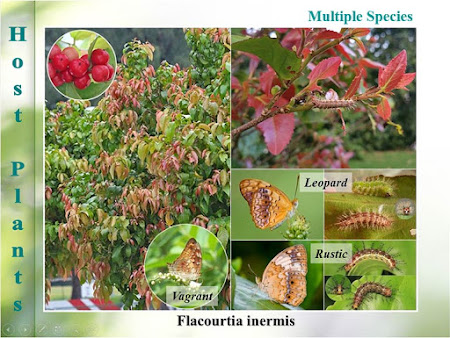Public Talk : Planting for Butterflies

Last weekend, the National Parks Board, Singapore held its Parks Festival : Parks for Everyone at the Bishan-Ang Mo Kio Park. Featuring a wide range of programmes and activities spread over two days, the festival aimed to get the public outdoors into the park to enjoy themselves. There were exhibitions, workshops, educational talks, artists' handiworks and even a musical concert showcasing local talent!

The activities were grouped into 5 main categories - Entertainment, Guided Tours, Sports and Wellness Activities, Talks and Workshops, and Volunteer Programmes, Courses and Exhibitions. A timetable of the events over the two days was prominently displayed at Bishan-AMK Park so that the public can pick and choose what interests them.



The activities and mini-exhibition stalls were housed under large marquees at the open green areas at Bishan-AMK Park, so that visitors can still enjoy themselves, rain or shine. Despite the not-too-cooperative weather at this time of the year, the weekend crowd was out and about at Bishan-AMK Park and there was reasonably enthusiastic interest in the programmes and activities throughout the day. The plant workshops were well attended, as visitors were treated to a whole range of show-and-tell from wood carving to growing bananas to cultivating air plants.




On Sunday afternoon, I went to support Mr Foo Jit Leang who founded the nature group from Seletar Country Club. He was giving a talk on "Planting for Butterflies" where he was sharing his knowledge on butterflies and planting to attract them. Mr Foo's Butterfly Garden at the Seletar Country Club recently won Platinum for Environment and Biodiversity at the 2016 Community in Bloom Awards. He also went on to offer his advice to several other award-winning butterfly gardens in schools.


A small group of enthusiasts turned up for Mr Foo's talk despite some members of the audience who turned up slightly late because they could not find the venue where the talk was held! After a slight delay, Mr Foo started his talk by introducing butterflies, their biology and ecological features and other interesting anecdotes.


He shared his experience about caterpillars of both butterflies and moths, and how to plant the appropriate species of plants to attract certain species of butterflies. In a cultivated urban garden, it is important to plant the right species of plants to attract the butterflies whose caterpillars feed on those specific plants. Gardeners should be aware that butterfly caterpillars do not eat anything and everything (a common misconception).

Mr Foo's presentation showcased many colourful slides of plants, caterpillars and butterflies that he has managed to attract to the Butterfly Garden at Seletar Country Club. The total number of species that have been spotted at the Butterfly Garden currently stands at 109 - an impressive number for a garden within an "environmentally-unfriendly" golf course in Singapore!



Live caterpillars and pupae always attract the kids and fascinate everyone!
At the end of his talk, Mr Foo brought out the "live stars" of the show - caterpillars of various species of butterflies. The kids at the talk were fascinated by the different shapes and sizes of the caterpillars and pupae that were shown to them. There were also many enthusiasts amongst the audience who were very keen on breeding caterpillars.



Butterfly Habitat @ Bishan-Ang Mo Kio Park
The group then took a walk to the Butterfly Habitat @ Bishan-AMK Park. This compact butterfly garden was started some years back by a group of Raffles Institution students and their initial work was continued by a group of community gardeners and enthusiasts, working with NParks to bring this butterfly garden to its current state. The lush plants - both nectaring and host, have attracted a number of butterflies to the garden.



Interpretative signages help to educate members of the public on what they can find at the Butterfly Habitat @ Bishan-AMK Park
NParks has also secured an external sponsor to fund additional permanent interpretative signage to introduce visitors to the Butterfly Habitat. The signages depict pictures and information on the plants and butterflies that can be found at the Butterfly Habitat so that visitors can be educated on the biodiversity that they encounter at the garden.

Mr Foo and his team won a Platinum award at the 2016 Community in Bloom Awards for the Butterfly Garden at Seletar Country Club
So if you're planning on starting a butterfly garden in your school or community park, do contact Mr Foo or join his FaceBook Group - Nature @ Seletar Country Club. NParks, ButterflyCircle, Seletar Country Club hope to encourage more enthusiasts to set up butterfly gardens all over Singapore, so that our urban biodiversity can be conserved and enhanced for more residents to appreciate them.
Text by Khew SK : Photos by Foo JL and Khew SK







































